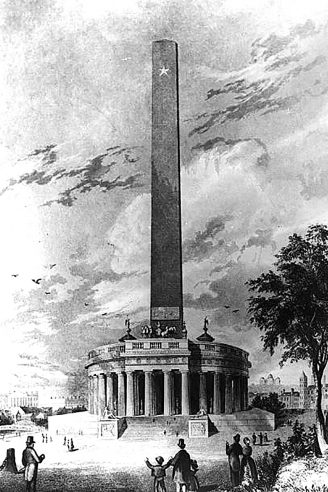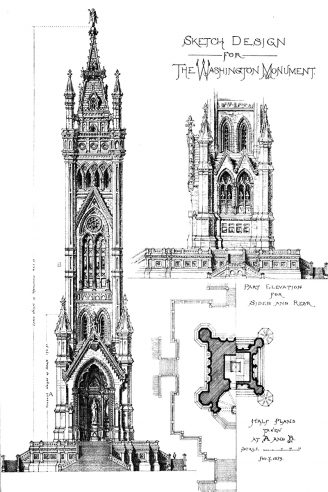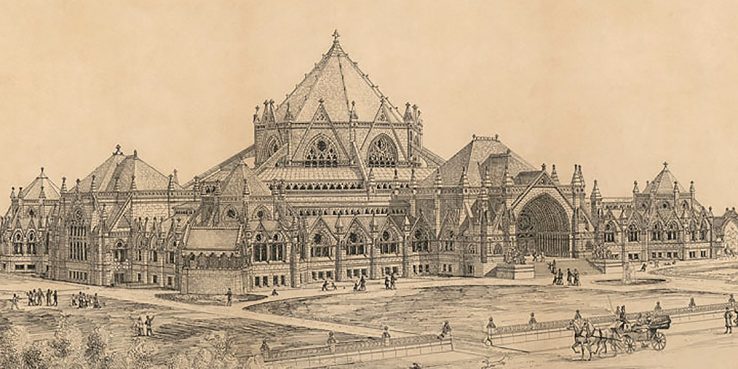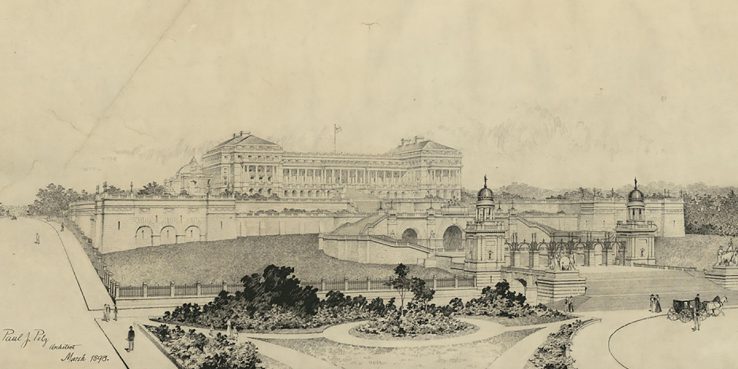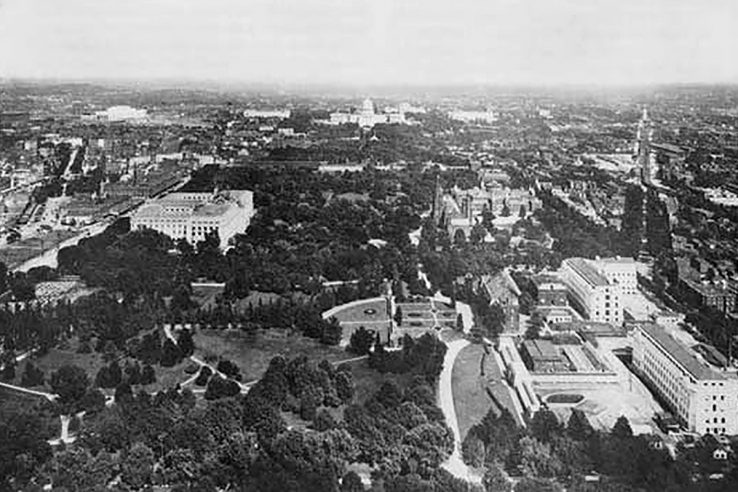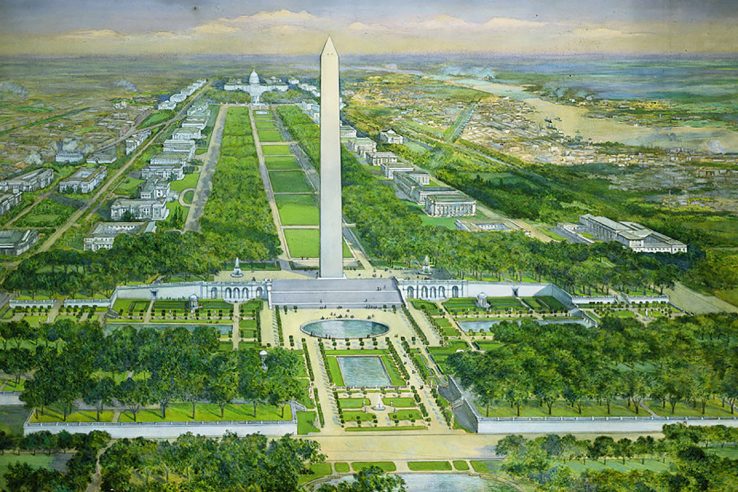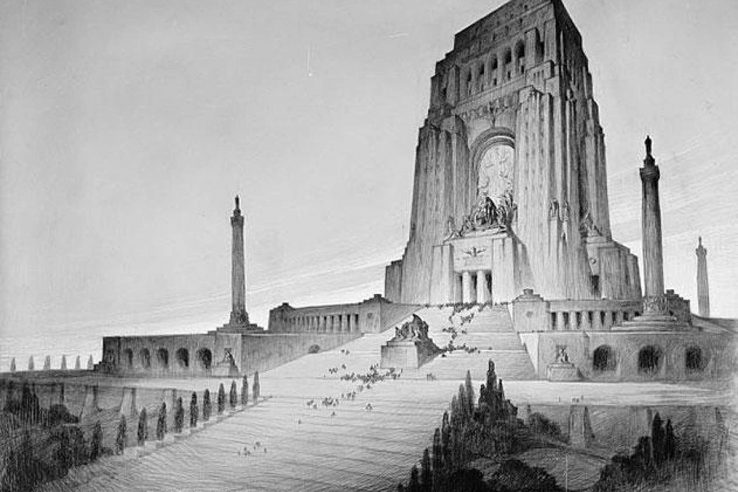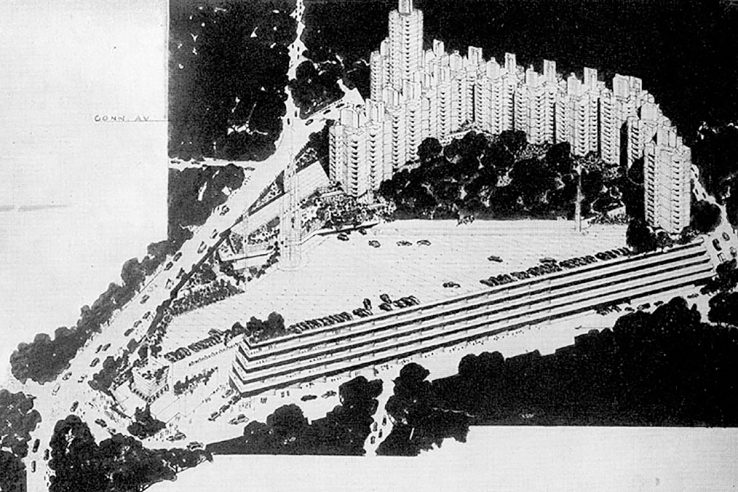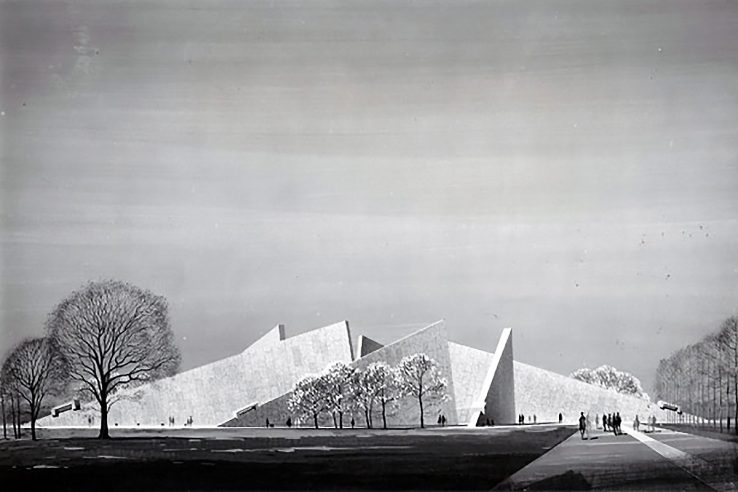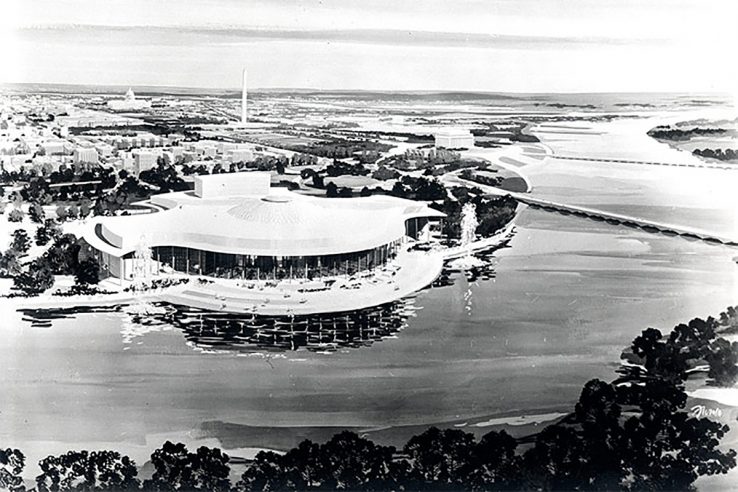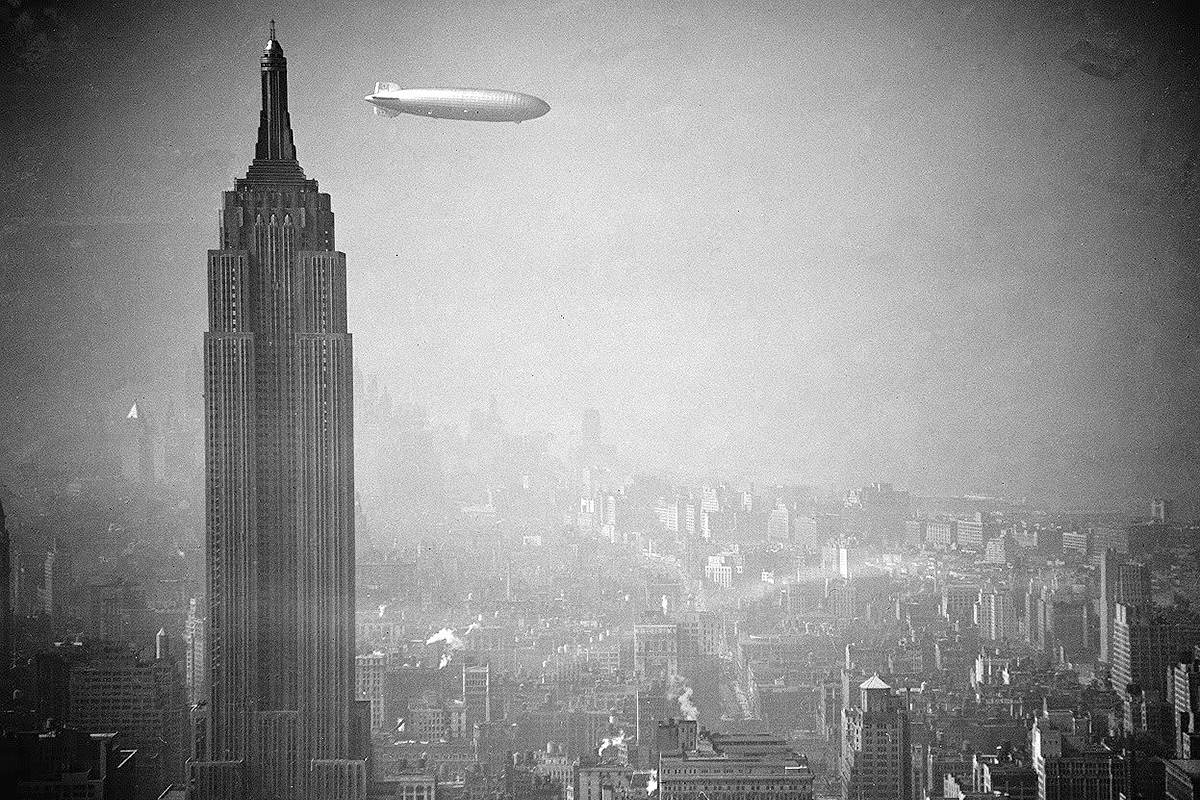Various proposals have been made through the years for buildings and building expansions in America’s capital that came to naught — from a Lincoln Memorial in the shape of a pyramid to a palatial Executive Mansion on Meridian Hill.
Washington Monument
Proposals for a monument to America’s first president were made right after George Washington’s death in 1799, but partisan squabbling and North-South tension delayed construction until the second half of the nineteenth century.
Robert Mills won a design competition organized by the privately-funded Washington National Monument Society in 1845, although it was deemed too expensive. The committee chose to eliminate the circular colonnaded building from his design and built only the obelisk. Even that proved too costly, however. Construction began in 1848, but donations ran out in 1854. Infighting and the Civil War set back the project by two more decades. Construction resumed in 1879 with congressional funding. The monument was finally completed in 1884 and dedicated the following year.
Library of Congress
The Library of Congress’ main Thomas Jefferson Building was designed by John L. Smithmeyer and Paul J. Pelz. The two won a competition in 1873, but construction was delayed by Congress until 1886.
An alternative design, by Alexander Rice Esty, is shown here. It would have been done in the Gothic style.
Memorial Bridge
The German-born Pelz drew on his European heritage with this proposal for Memorial Bridge. At the time (1887), the bridge — which connects the city with Arlington National Cemetery — was conceived as a memorial to Civil War General and President Ulysses S. Grant.
Caroline Harrison’s White House Expansion
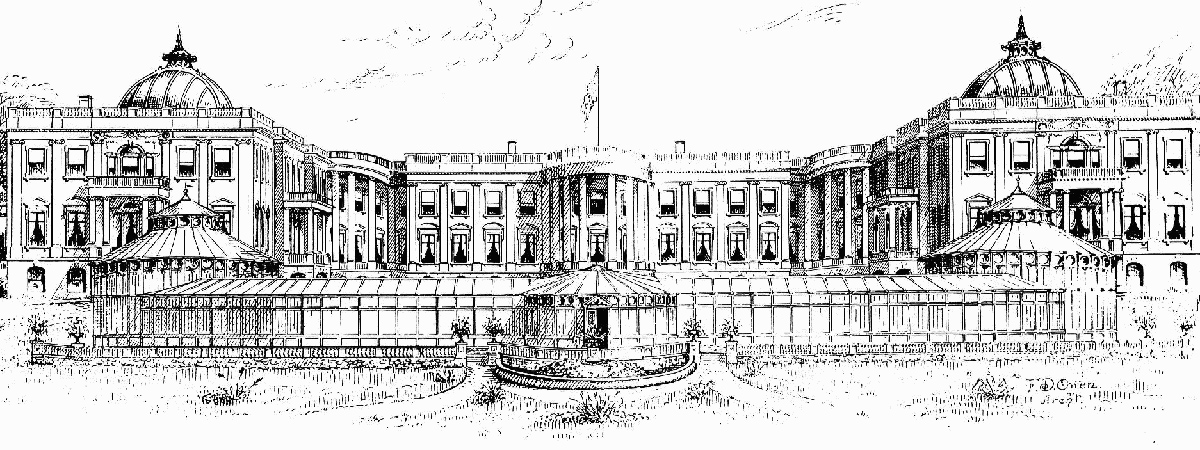
Caroline Harrison, the wife of President Benjamin Harrison, looked into expanding the executive mansion in 1889. She worked with Frederick D. Owen to create a plan that added large east and west wings, one for the public, another for executive offices, rounded out by a conservatory on the south side.
Congress rejected the plan and the Harrisons instead renovated the building with electricity and other modern conveniences.
White House Museum has more.
Executive Mansion
An even more ambitious plan was for a presidential palace north of the existing White House, on Meridian Hill.
Two plans were submitted, one by Paul J. Pelz (the same) in 1898 — shown here — and another by Franklin W. Smith.
Both envisioned palatial mansions that would have been more at home in a European monarchy than the young American republic. Congress, predictably, turned them down.
Washington Monument Gardens
Lawmakers did wish to beautify DC. A commission led by Senator James McMillan of Michigan introduced various proposals, many of which were implemented piecemeal.
The National Mall was transformed from a forest-like Victorian park into the expanse of grass we know today. Museums and cultural centers were erected along its east-west axis. The Lincoln Memorial, with its iconic reflecting poll, was built on the western end, across the Mall from the Capitol.
One element of the plan that didn’t come to fruition were the Washington Monument Gardens: a system of terraces, steps and arcades around the base of the Washington Monument. It was later discovered that the gardens, as proposed, would have destabilized the obelisk’s foundations.
Lincoln Memorial
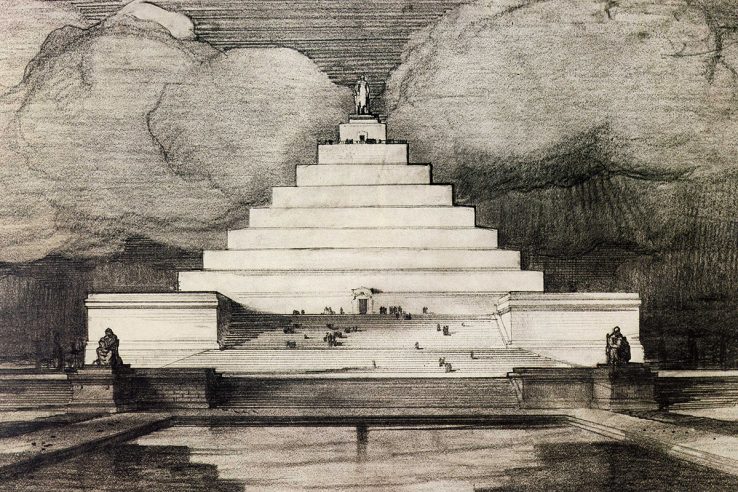
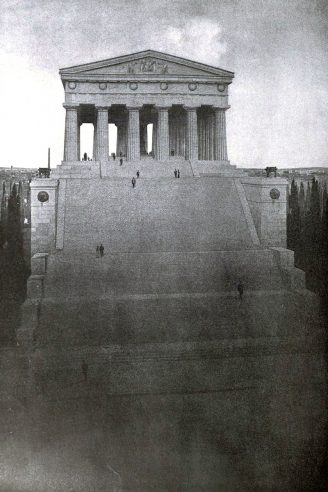
The Lincoln Memorial would have looked very different if John Russell Pope had had his way.
The architect of the National Archives and Records Administration building and the Jefferson Memorial proposed a pyramid to honor America’s Civil War president. When that got shot down, he suggested a Roman-style template on Meridian Hill, overlooking the city.
Vox has more designs.
Theodore Roosevelt Memorial
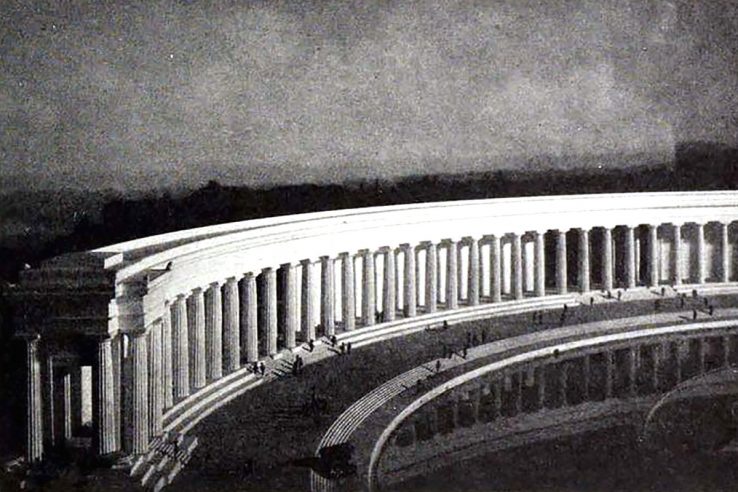
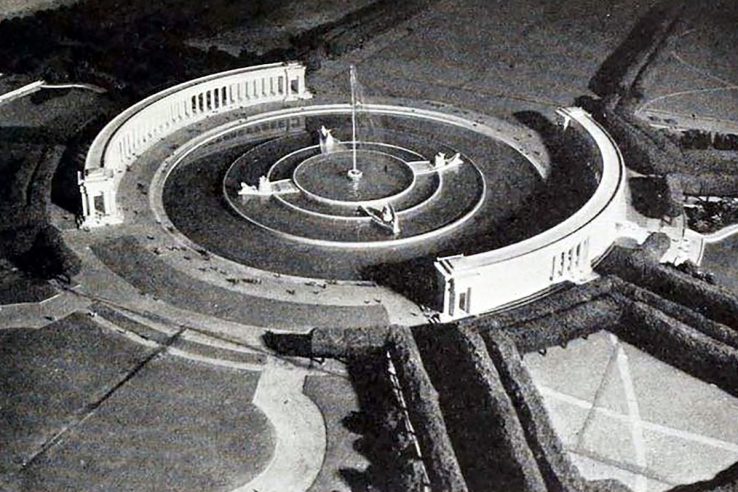

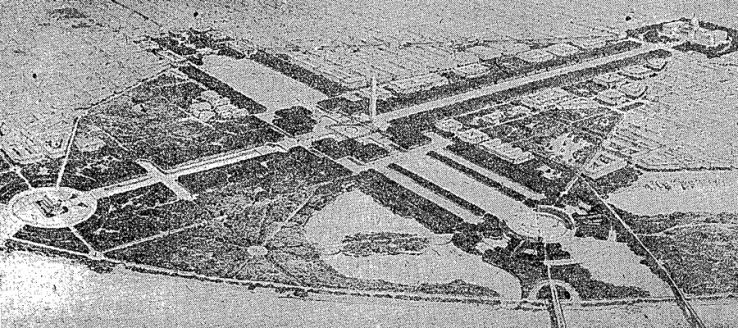
Pope also submitted a design for a Theodore Roosevelt Memorial in 1925. His idea was to drain the Tidal Basin south of the Washington Monument and built a large fountain surrounded by colonnades.
The site was later chosen for the Jefferson Memorial, which Pope designed, but the Tidal Basin wasn’t completely drained. A memorial to the first President Roosevelt would be built on a small island in the Potomac River in the 1960s.
Mother’s Memorial
The Woman’s Universal Alliance, a now-defunct women’s rights group founded in 1922 by the wife of a rich DC lawyer, wanted a monument to “proclaim the debt each mortal owes to the woman who risked her own life to give life.” They chose a site near the Naval Observatory but never raised enough money to start construction.
Crystal Heights
Crystal Heights was Frank Lloyd Wright’s proposed apartment and shopping complex for DC. It was supposed to have been built near Dupont Circle on what was at the time (1940) one of the largest remaining undeveloped tracts in the capital.
Zoning laws, however, forbade towers higher than 110 feet and nothing came of the plan.
Harry Truman’s West Wing Expansion
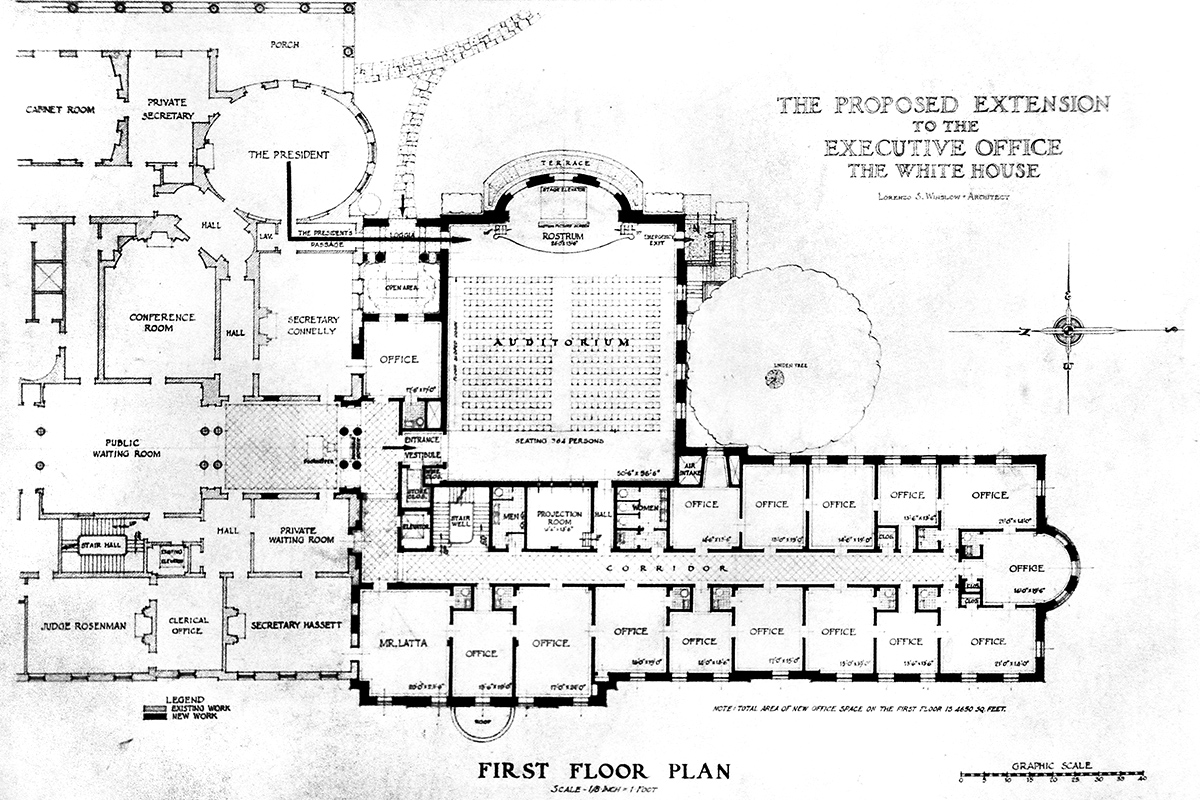
Major expansions had been been to the White House under Franklin Delano Roosevelt, reflecting the growth of the executive branch. Even so, by the end of the Second World War, there still wasn’t space in the West Wing for a cafeteria and a press room.
Harry Truman had Lorenzo Winslow draw up plans for an expansion, but — once again — Congress refused to pay for it. A cafeteria was later added to the basement while FDR’s pool was converted into the press briefing room.
White House Museum has more.
Franklin D. Roosevelt Memorial
Plans for a monument to America’s longest-ruling president date back to the 1950s. Marcel Breuer and Herbert Beckhard proposed this Modernist structure in the 1960s. It was rejected in favor of a design by landscape architect Lawrence Halprin.
National Cultural Center
This was Edward Durell Stone’s first design for a National Cultural Center on the Potomac River. It was renamed in honor of President John F. Kennedy after his assassination in 1963. Stone’s final version ended up more boxy.

